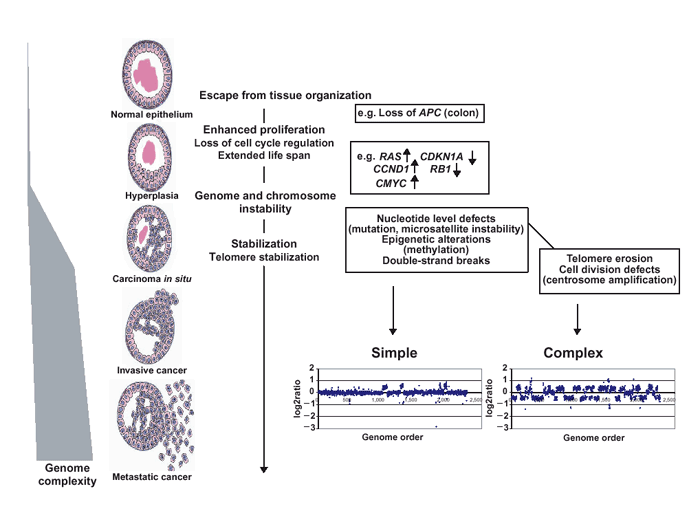Chromosomal evolution in human solid tumor progression.
Keywords
Flag Inappropriate
Delete Content

Chromosomal evolution in human solid tumor progression.
The stages of progression are arranged with the earlier lesions at the top. Cells may begin to proliferate excessively owing to loss of tissue architecture, abrogation of checkpoints and other factors. In general, relatively few aberrations occur before the development of in situ cancer. As indicated, a sharp increase in genome complexity (the number of independent chromosomal aberrations) in many (but not all) tumors coincides with the development of in situ disease. The copy number profiles of HCT116 and T47D are labeled as 'simple' and 'complex', respectively, to distinguish between tumor genomes with few or many copy number changes.
This image is linked to the following Scitable pages:
Thousands of chromosomal aberrations have been discovered in different types of cancer. But how do these various changes all hijack normal cellular processes to promote cancer?





















Comments
CloseComments
Please Post Your Comment